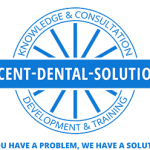I’ve been a general dentist for over 35 years. Long enough to see the business evolve and change into something that would have been unrecognizable when I started.
In my mind it began with the expansion of third party dental insurance in the early 80s and the promise of more access for patients, more money for procedures.
In the beginning dental insurance wasn’t a huge expense for insurance companies to offer. Today between private and government programs somewhere between 60 and 80 percent of people are now covered under some sort of third party insurance program.
By those numbers alone, you can tell that there are a lot more growth opportunities than at any time in the past.
So it should be no surprise that as of 2016 corporate dentistry has become the fastest growing segment of the industry – growing at almost 40 to 45% each year.
This monolith of corporate dentistry can generally be broken down into two categories; Dental Service Organizations (DSO) and Managed Service Organizations (MSO).
What’s important for dentists understand is the relationship between DSOs, MSOs and venture capitalists or equity type firms. When a venture capital company or equity firm has dollars invested or actual ownership in these corporate entities, there can perhaps be a conflict of interest.This conflict of interest is brought about because in many cases, equity firms have a much shorter lifespan for investment. In general, dealing with the dental profession, the goal is to triple or quadruple their money in a three to seven year timeframe, before selling that business to look for other investment opportunities.
As a patient looking for dental care or as dentist looking to either invest in Dental Service Organizations, sell their practice to a Dental Service Organization or perhaps even join a Dental Service Organization, it’s critical to understand some of the fundamental dimensions that underlay the purpose and function of MSOs and DSOs.
On this point let’s be clear. A venture capitalist provides capital with the goal of turning that capital into profit as quickly as possible.
There are two ways to work with MSOs and DSOs.
The first is similar to a franchise model. In this case the dental office assumes the branding and processes of the the senior entity in the relationship and there are a specific set of guidelines, rules and regulations that must be followed to maintain the relationship.
In this case the public certainly knows who’s involved and understand what to expect from these practices.
The second group is a little bit more of a gray area. It’s the same type of corporate relationship with the dentist. However the branding remains unchanged. Ie Dr. Smith & Jones Dental Office stays the same.
The public doesn’t necessarily know the ownership and operating structure and may think the office locally owned, managed and operated.
In the end you’ll find the same pressures in each instance. Over time more and more efficiencies will be found in order for the corporate interest to maximize its return.
This type of business relationship isn’t for everyone. But if you want to be able to shake the stress of ownership and simply work as an employee these are certainly options to pursue.
Ready to Get Started?
If you are interested in learning how to take your dental practice to the next level, please contact Ascent Dental Solutions today at 413-224-2659 to learn how Dr. Coughlin can help.

